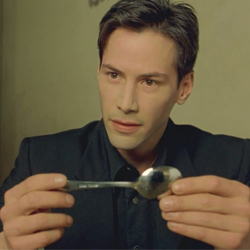It’s easy to imagine we’re all on the same page. It’s human nature to hope so. But if you take a stroll through the average marketing agency, you’ll notice that the staff aren’t a cross section of society. Does this matter? Behavioural science can offer some insights.
Not your average customer
Available data shows us that marketing agencies are staffed by a particular type of person. First, we’re young(ish). According to an IPA survey, only 7% of staff are over 50. But look at the latest UK census and you’ll see that 38% of the UK population fall into this age group.
There’s a difference in income too. Marketers are relatively well paid, with IPA data reporting early career salaries of up to £38,000 and Heads of Department up to £187,000. Compare this with the average UK wage of around £35,000, and you can see that you don’t have to have been part of agency life for too long before you’re doing better than many. What about politics? Here too, marketers are pretty far removed from the norm. For example, which way did you vote on Brexit? If you were like 92% of agency employees, according to research by Reach Solutions, you probably voted against. But obviously, the majority of the population voted the other way. Our purchasing behaviour, not surprisingly, is hardly representative either. In research I carried out in 2016, I found that agency staff are more likely to read The Guardian than The Sun, shop at Waitrose than Asda, and drink Peroni rather than Carling, the UK’s most popular beer at the time.
You’re like me, right?
Okay, so, we marketers are clearly not the same as the average punter. Does that matter? Well, it might. Because there is evidence to suggest that we tend to assume others are more like us than they really are.
One study showing this — called the false consensus effect — comes from Lee Ross, David Greene and Pamela House at Stanford University in 1977. They asked participants to read a short story and then suggest what they think other people would do.
Here’s one of the stories they saw, and the question they answered.
While driving through a rural area near your home, you are stopped by a county police officer who informs you that you have been clocked (with radar) at 38 miles-per-hour in a 25-mph zone. You believe this information to be accurate. After the policeman leaves, you inspect your citation and find that the details on the summons regarding weather, visibility, time, and location of violation are highly inaccurate. The citation informs you that you may either pay a $20 fine by mail without appearing in court or you must appear in municipal court within the next two weeks to contest the charge.
What % of your peers do you estimate would pay the fine $20 by mail?
What % would go to court to contest the charge? (Total should be 100%)
After predicting what others would do, the participants indicate which of the two options they would choose themselves.
There was an interesting pattern: participants tended to say they would do what they thought people in general would do. So, 72% of people who said they would pay the fine also predicted that others would pay the fine. And 52% of people who said they would contest the fine thought that others would also contest it.
Why do we tend to believe we’re aligned with others? Well, we’re social creatures, highly motivated by a sense of belonging. We like to feel part of a group and are thus inclined to create scenarios in which we belong. It’s also a boon to our egos if external views agree with our own — it’s a form of social validation. And within the context of social media, we are increasingly supplied with information that supports our beliefs — further bolstering a sense that everyone agrees with us. But it can lead to faulty decision making. If we as marketers are inclined to think consumers share the same preferences and perspectives as we do, we’ll end up making choices only for people like us.
What can you do?
As a useful start, it’s important to be able to question your assumptions, especially those based on your personal experience or things that everyone in the agency seems to agree on. As Bertrand Russell once said, ‘In all affairs it’s a healthy thing now and then to hang a question mark on the things you have long taken for granted.’
And of course, research will help you to understand your customers — but to appreciate their needs and issues more deeply, try to build empathy: get as close to walking in their shoes as you can. Walt Disney famously insisted that his Imagineers visit Disneyland regularly, to stand in line with guests.
For a project on incontinence products, I conducted what I call ‘method planning’. Over the course of a weekend, I texted the team at random times. Each time I messaged them, they had to stop what they were doing and immediately find a toilet. This helped the team — mostly in their 20s — to experience the inconvenience of living with incontinence, and to empathise with the mostly older people who deal with it every day. It was an eye-opening experience for them. For example, one planner pointed out that the urgency was only stressful if they were out of the house. That led us to shape the media budget accordingly: up-weighting outdoor ads, down-weighting in home media like TV.
So, if we can acknowledge our natural bias towards assuming others are like us, and then do what we can to shift that perspective using creative approaches to research — experiential if possible — we can ensure we don’t drift too far out of touch with the customers we’re trying to reach.
Featured image: Craig Adderley / Pexels


































